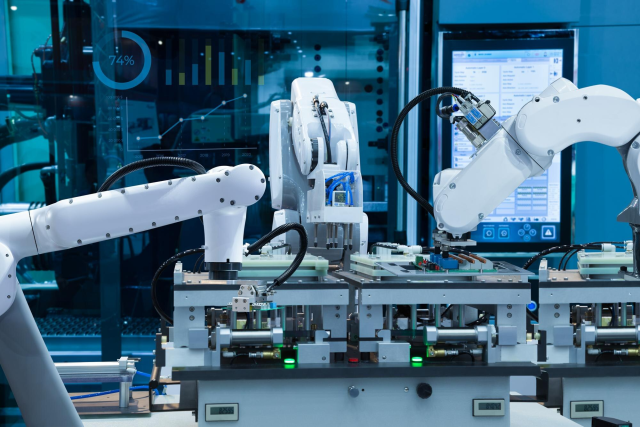
As a result of technological innovation and changing regulations, the medical device contract manufacturing industry is changing rapidly. The revenue of the medical device contract manufacturing industry was reported at US$ 88.8 billion in the year 2022 and is estimated to grow up to USD 192.3 billion by the year 2030, growing at a CAGR of 10.2% from 2023 to 2030. As the health sector needs accuracy, speed, and eco-sustainability, manufacturers need to employ new technologies effectively. Let’s explore key medical device manufacturing trends shaping the future.
Advanced Manufacturing Technologies
The adoption of innovative medical devices is being propelled with the application of AI, automation, and 3D printing. The use of 3D scanning and 3D printing has drastically cut the costs associated with developing new medical devices and even the production of existing devices. At the same time, automation improves productivity by reducing the errors caused by the human workforce and increasing the scale of operation. Besides, the presence of errors in a project is more accurately evaluated and rectified in any quality control supervision through the use of AI frameworks within certain systems and processes. With greater ease and a little more precision, most key parts and custom implants can now be produced. Above all, the use of 3D printers makes it possible to produce certain models in record time compared to other methods, and the best part is, it economizes the effort and time needed to produce the prototypes.
Sustainable Development of Medical Equipment and Instruments
Manufacturers cannot avoid eco-friendly production processes anymore. Businesses are moving towards using energy-saving processes, including the use of biodegradable materials to lower their carbon emissions. Recyclable containers and eco-friendly brands of scientific instruments are on the rise in order to comply with international environmental standards. It is also important to note that these steps increase brand image and let companies further differentiate themselves from their competition.
Manufacturing Wearable Devices
Thanks to the development of healthcare wearables, medical instruments are designed to be smaller, faster, smarter, and more efficient. Patients can enjoy AI-powered pacemakers and continuous glucose monitors that are highly advanced yet portable. The ability to produce these powerful technologies in such small form factors is made possible by advanced techniques of medical device production. Patients now have unprecedented convenience and real-time health monitoring.
Integrated Supply Chain Planning
Like with any business, the expected output of a particular firm is heavily reliant on how strong their supply chain is. The advancement of blockchain technology resulting in transparency is a big contributor to their compliance with regulatory standards. AI with predictive models allows manufacturers to anticipate disruption within the supply chain. These approaches make it possible to add efficiency and precision accuracy while cutting expenses.
Evolution in Legal Guidelines and Their Effects on Manufacturing Devices and Equipment
Compliance is central with the tracking and advances made with the FDA, MDR, and GMP. Medical device contractors are working towards creating sophisticated regulatory tracking systems that guarantee compliance with set regulations. Companies that are proactive in regulatory compliance put themselves in a favorable position, which consequentially decreases the chances of incurring penalties and recalls.
Conclusion
The development of devices in the medical realm is influenced by modern strategies, lifecycle management, and advanced supply chain systems. The incorporation of AI, 3D printing, and robotics in contract manufacturing guarantees the delivery of devices that are safe and efficient. One needs to keep abreast of these changes to remain competitive in the changing world of healthcare.






